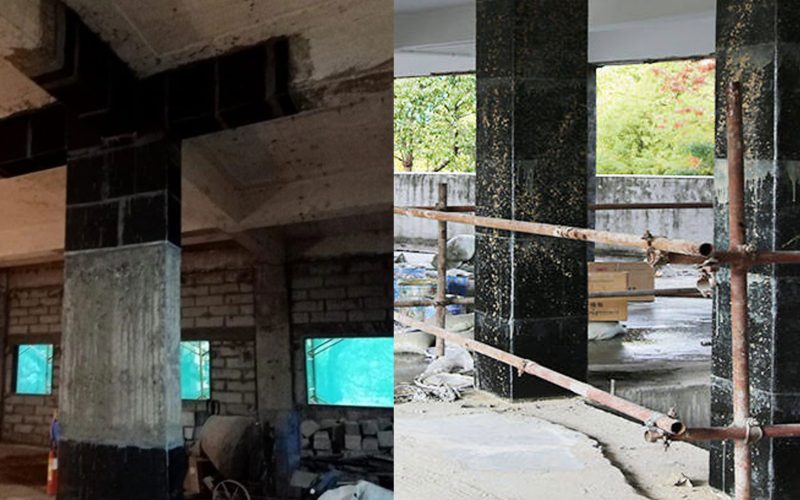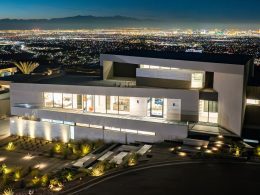Strengthen RCC Structures Effectively with Advanced Carbon Wrapping for Slabs Technology
Concrete structures, especially in India, face a variety of challenges. Due to high humidity, temperature fluctuations, and poor maintenance, reinforced cement concrete (RCC) slabs often develop cracks or start showing signs of wear. While demolition and reconstruction are traditional solutions, they are expensive, time-consuming, and disruptive. However, with the introduction of advanced carbon wrapping for slabs, structural rehabilitation has taken a leap forward. This innovative technology offers an efficient and long-lasting solution.
Why RCC Structures Need Strengthening
Over time, environmental stressors degrade the quality of concrete. Exposure to water, chemicals, and temperature changes results in weakened structural elements. RCC slabs are particularly vulnerable, especially in older buildings. Often, engineers notice sagging, cracking, or delamination. These issues compromise safety and usability. Hence, strengthening becomes essential. Not just for extending the life of the structure, but also for ensuring safety for its occupants. This is where carbon wrapping for slabs proves its value.
What is Carbon Wrapping for Slabs?
Carbon wrapping for slabs is a technique that uses carbon fiber reinforced polymer (CFRP) sheets to envelop the slab surface. These sheets are bonded with special adhesives. They add tensile strength to the slab, allowing it to carry more load. In India, where urban development is rapid, many existing structures are not up to modern design codes. Thus, retrofitting them with this method is both practical and effective. Furthermore, it is less invasive than traditional techniques.
Benefits of Using Carbon Wrapping for Slabs
There are numerous advantages to adopting this modern solution. Firstly, it significantly increases load-bearing capacity. This means buildings can support additional floors or equipment without worry. Secondly, it prevents further damage by containing existing cracks. Also, it resists corrosion, which is a common issue in Indian coastal regions. Additionally, it enhances durability while maintaining the aesthetics of the structure. Since it is lightweight, it does not increase the dead load of the slab.
Application Areas in Indian Context
Carbon wrapping for slabs is highly suitable for multiple sectors in India. For example, in commercial buildings where expansion is frequent, it offers a simple upgrade. In old residential complexes in cities like Mumbai or Kolkata, it provides a way to meet current structural safety norms. Public infrastructure like hospitals, schools, and railway stations can also benefit. These are structures where downtime must be minimal. In such scenarios, carbon wrapping offers a non-disruptive way to ensure safety.
cost-Effectiveness of Carbon Wrapping for Slabs
While the initial cost may appear high, the long-term benefits outweigh it. There’s less need for future repairs. Maintenance costs go down substantially. Moreover, there is minimal disruption to operations.
Process of Carbon Wrapping for Slabs
The application process is quite straightforward, but it requires precision. First, the surface of the slab is cleaned and prepared. Any loose concrete is removed, and cracks are sealed. Then, a bonding agent is applied. After this, the carbon fiber sheets are layered onto the slab. These are pressed firmly to ensure adherence. Once set, the strengthened slab is left to cure. The entire process can usually be completed within a few days, depending on the size of the area.
Sustainability is an increasing concern in the Indian construction industry. Carbon wrapping for slabs supports this goal. Since it reduces the need for demolition, it lessens construction waste. Also, the materials used are durable and non-toxic. They do not release harmful gases or substances. This makes them safe for both occupants and the environment. The longer life span of the structure also contributes to lower resource consumption.
Choosing the Right Contractor in India
Selecting the right service provider is crucial. Make sure they have experience in carbon wrapping for slabs. Look for client reviews and previous project details. Also, ensure they follow safety norms and use quality materials. Ask about the timeline and post-service support. In India, word-of-mouth and local references are very effective in identifying reliable contractors. Don’t rush the decision. A well-done job can last decades.
Maintenance Tips After Wrapping
After the application, regular inspections help keep the structure in top shape. Check for signs of moisture or impact damage. Though rare, these can affect the bonding. Cleaning with mild solutions helps maintain surface integrity. Avoid hanging heavy objects unless approved by an engineer. Keeping a maintenance log also helps in long-term performance tracking. These steps ensure the benefits of carbon wrapping for slabs last longer.
Final Thoughts
Advanced carbon wrapping for slabs offers a reliable, efficient, and sustainable solution to strengthen RCC structures. It fits well with India’s urban needs and economic conditions. Whether you own a residential apartment, manage a commercial building, or oversee public infrastructure, this technique can bring lasting benefits. By embracing this method, Indian property owners can enhance safety, save costs, and extend the life of their buildings without major disruptions.












